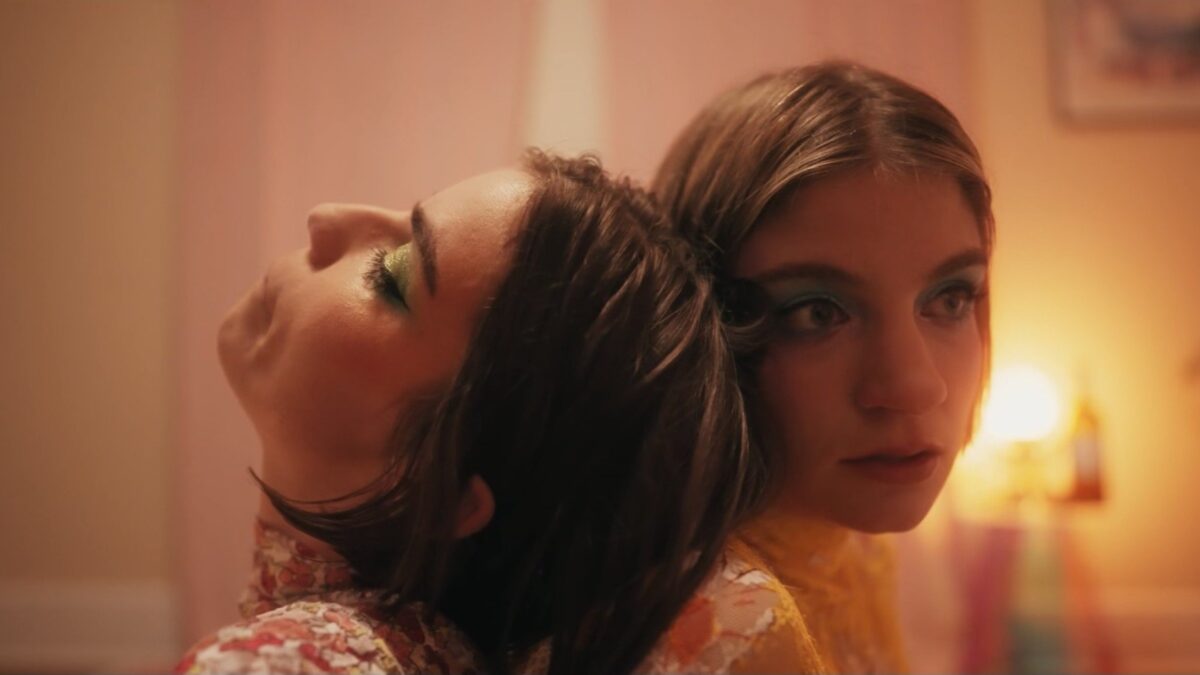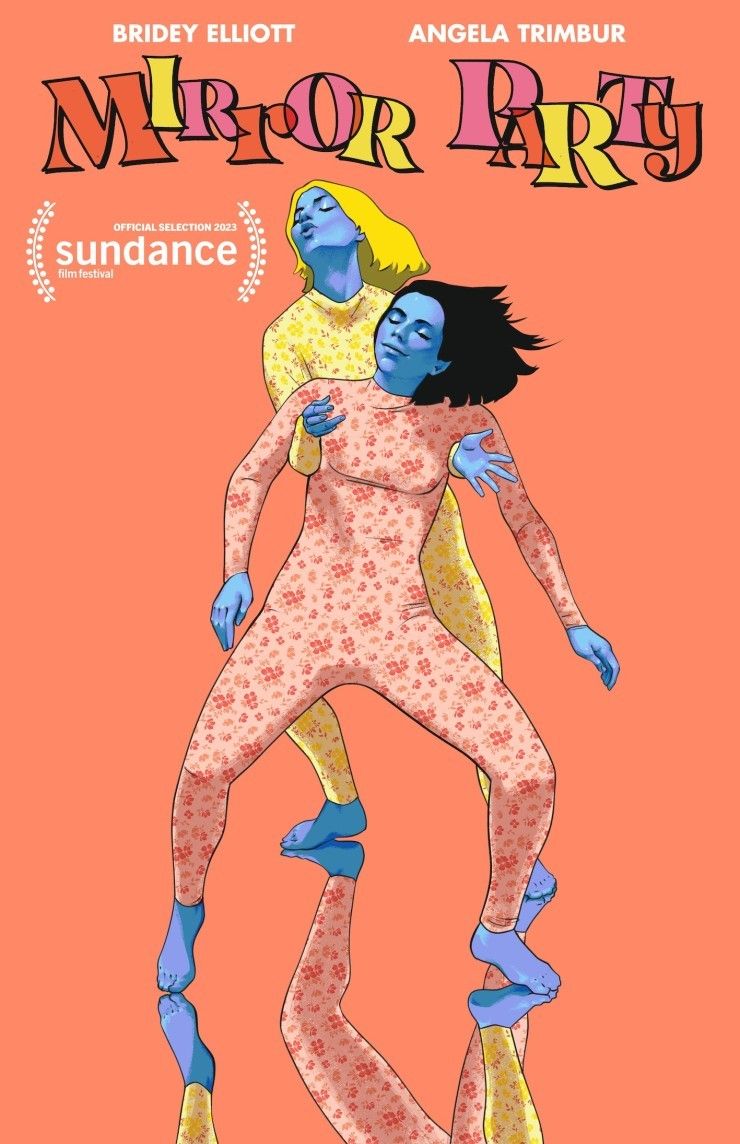
Editor Patrick Lawrence shares how he’s used Adobe Premiere Pro to achieve his dream of becoming a professional film editor, including working on seven films featured at the Sundance Film Festival.
By Michelle Gallina, principal product marketing manager, Adobe Creative Cloud: Premiere Pro & After Effects.
Since Patrick Lawrence started working as a professional film editor 11 years ago, he has seen seven of his films premiere at the Sundance Film Festival, including the feature-length films Scare Me and Clara’s Ghost. Whether working on film, television, music videos, or commercial projects, Lawrence has built a reputation as a passionate collaborator who puts everything into his art.
Lawrence’s most recent Sundance film, Mirror Party, reunited Lawrence with a frequent collaborator, director Bridey Elliott, to tell the story of two best friends whose conversation begins to blur the lines between reality and fantasy.
I sat down to talk with Lawrence about Sundance, his journey into the industry, and why Adobe Premiere Pro has remained his app of choice for so many years.
Credit: Courtesy of Patrick Lawrence
Tell me a bit about Mirror Party and what made the edit unique.
Lawrence: Mirror Party is essentially about two best friends. One is having trouble with her boyfriend, so the two decide to role play a difficult conversation. But as the role play goes on, the lines between the friend and boyfriend start to blur, until it starts to feel like a fever dream.
One of the biggest things we explored in the edit was trying to play up the slow slide between reality and fantasy. A lot of that was accomplished through sound, color, and lighting. This is where Adobe Premiere Pro and the Lumetri Color Panel really came into play. For instance, at one point in the film, the two characters pretend that they’re in a restaurant. Slowly, the living room that they’re in starts to transform until one character snaps out of the illusion. That was done in Premiere Pro, using the Lumetri Color Panel to create the dimly lit atmosphere of an intimate restaurant, then switch back to brighter living room lighting in a second.
Frame.io was also huge for the Mirror Party edit. Bridey and I were in Los Angeles, but co-writer and co-star Angela Trimbur was in New York. With Frame.io, we could all be looking at the edit and commenting on it at the same time from opposite coasts. I was an early adopter of Frame.io, and I always used to operate with Premiere Pro on one screen and Frame.io on another. But now that the two apps are integrated, it’s so fantastic. I don’t have to leave Premiere Pro to see notes or share videos with others.

‘Mirror Party’ poster
Have you always worked with Premiere Pro?
Lawrence: You can’t be an editor only knowing one platform, but when I have a choice, I go with Premiere Pro. I’ve had seven films in Sundance so far, and every one of those has been edited in Premiere Pro. Maybe it’s just a coincidence, but maybe there’s something to it.
Editing is always about finding ways to be faster, and Adobe definitely provides that. I feel like Adobe is really good at finding that balance between delivering all the functionality that professionals need, but still making it relatively easy to learn. Things like the Lumetri Color Panel and Essential Sound Panel make my rough cuts look so much more polished. Premiere Pro also takes advantage of the integration with After Effects to make it easier to incorporate things like titles, graphics, masks, and tracking effects into the edit.
Are there any upcoming Premiere Pro features that you’re excited about?
Lawrence: I’m most excited about the big advancements Adobe is making in AI. Like Auto Reframe in Premiere Pro uses AI to automatically center the main action of a video for any aspect ratio. This is huge in the commercial space where clients want multiple versions of a video for social media. Auto Reframe gets the resizing done 95% of the way, so I just need to make a couple of tweaks and hit Export. I’m always most interested in story and character in my edit, so anything that makes the technical stuff easier makes me happy.
I also can’t wait to start working with Speech to Text. Say a director is looking at an edit, but they don’t like the way that the actor says, “I love you.” Using Speech to Text, I can search through all of the takes and pull up the right keyframes in seconds. Before, it might have taken me several minutes of scrolling through all the shots. That’s time that the director and I get back to put toward polishing the film.

Patrick Lawrence’s locked cut of Mirror Party in Adobe Premiere ProCredit: Patrick Lawrence
How did you get your start in editing?
Lawrence: I always knew that I wanted to work in film. When I went to college and studied film, everyone wanted to be a director, and I thought that I needed a way to stand out. So, I took a video production course my freshman year. I was surprised to learn that editing felt like a natural extension of what I love about directing. It’s all about finding the characters and bringing the story together.
I found a place in the St. Louis film community, but I wanted to make the leap to Los Angeles before I got too comfortable. It was like completely starting over. I went from never having to look for work to handing out my business card everywhere I could to get projects. It took a while, but eventually those planted seeds started to grow. Everything really changed when two short films I had edited made it into the Sundance Film Festival in 2016. There were 8,700 short films submitted. 72 were chosen, including 12 from the U.S., and I had worked on two of them: Dogwalker and Affections. Affections was particularly important because it was where I met Bridey, and we’ve collaborated on several films since, including her feature Clara’s Ghost and the documentary The Starr Sisters.
Do you have any advice for other editors?
Lawrence: I think the most important thing is to learn everything you can. Premiere Pro is my touchstone for editing, but sometimes you’ll get a job where they want you to use Final Cut or Avid or whatever. You should know enough to be dangerous on any platform.
But I also mean learn everything about Premiere Pro. After using it for so many years, Premiere Pro is kind of like an extension of myself. I’ll admit that sometimes I’d just glance through new Adobe release notes and ignore the changes. But I’m starting to pay more attention to learning new plug-ins and features that make my life easier. Like I just started working with the Essential Sound Panel and I can’t believe how much I love it. I avoided it for a while because I’m not great with sound mixing, but it makes my rough cuts sound amazing. Adjusting things like color and sound doesn’t seem important in a rough cut, but it means that people viewing the cut are less distracted by an unpolished edit and we can all focus on the most important thing: getting the story just right.














